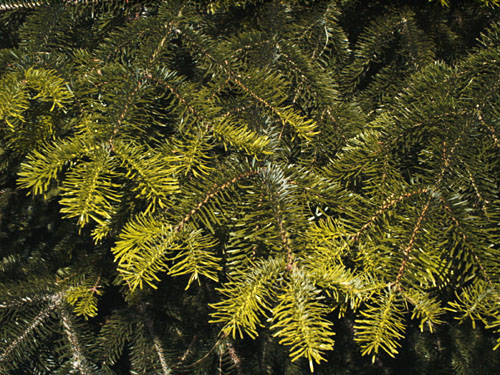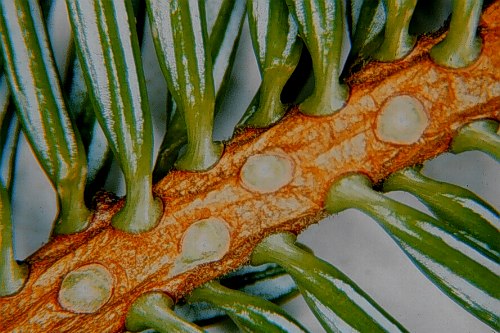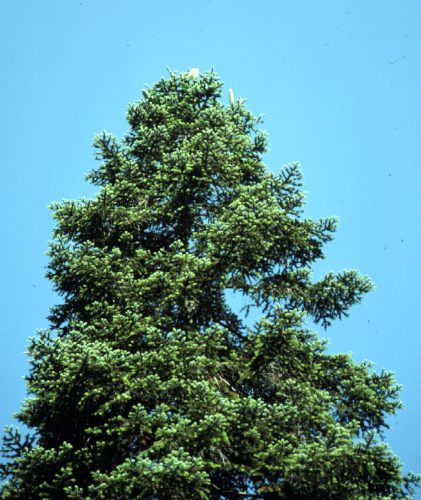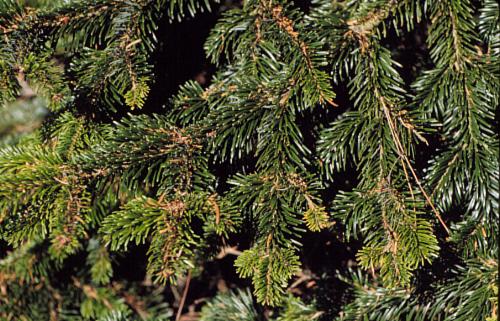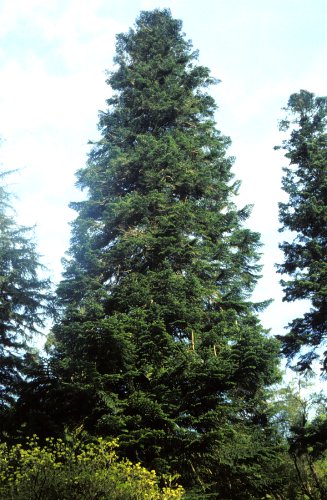Abies nordmanniana
Nordmann Fir, Caucasian Fir
Pinaceae
ExpandHabitat
- native to Asia Minor, Caucasus
- zone 5
Habit and Form
- evergreen tree
- narrow pyramidal shape with many dense branches
- holds branches to the ground
- 40' to 60' tall, can reach over 250' tall in wild
- 15' to 20' wide
- slow growing
- fine texture
Summer Foliage
- 1" to 1.5" long
- entire margins
- black green color
- 2 whitish stomatal bands on underside
- needle apex is notched or rounded
- needles densely cover stem
- upper needles shorter and pointed forward
- buds are not resinous
Autumn Foliage
- no fall color (evergreen)
Flowers
- no ornamental value
- monoecious
Fruit
- reddish brown
- 5 to 6" long
- slightly tapered cylindrical shape
- held upright mostly on upper branches
- showy
Bark
- smooth with resin blisters until very old
- gray-brown color
Culture
- full sun
- prefers moist, well-drained, acidic soil
- one of the easier Abies sp. to grow
Landscape Uses
- large, open areas (parks, campuses)
- specimen
- screen
- one of the most beautiful Abies sp.
Liabilities
- woolly adelgids, twig aphids, bagworm, scales and spider mites can affect the tree, but damage is usually not substantial
- hard to find
- doesn't thrive under harsh landscape conditions
- often damaged by deer
ID Features
- needles have notched or rounded tip
- smooth bark with resin blisters
- very long cones, 6"
- circular leaf scars
- buds are conical and not resinous
- black-green needle color
Propagation
- by seed
Cultivars/Varieties
Various cultivars exist, but none are common in commerce and most are reserved for dwarf conifer collectors.
'Pendula' - Name applied to clones with branches that weep.
'Prostrata' - Forms with low, trailing habits.
Forms are known with yellow needles, including 'Golden Spreader', a prostrate selection.
Selected forms with bluer needles are occasionally seen.
